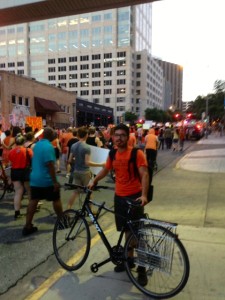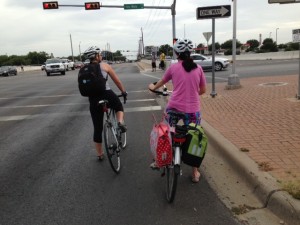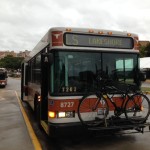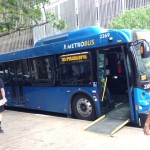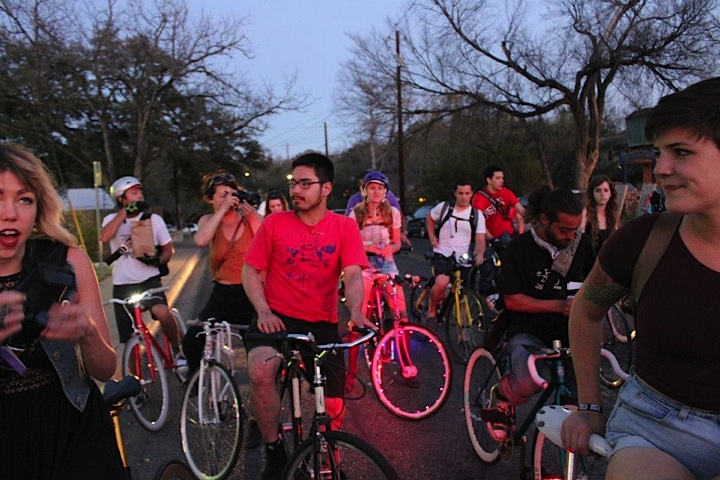In our latest student-written story, a chemistry major at the University of Texas talks about his car-free conversion.
By Andrew Hartford
Before I came to Austin, Texas for college, I lived in a car-dependent suburb of San Antonio. During my high school years there, I bought a car, submitting to societal pressure and parental advice.
According to my dad, buying the car was an investment. “You can’t get a job without a car,” he told me. At job interviews, one of the recurring questions I was asked was, “Do you have a car?” lending to the notion that a car symbolized personal reliability and competence. I was under the false pretense that cars meant freedom and that somehow without one, I’d be less attractive as an employee.
I worked long hours at a fast food restaurant, only to realize I was putting my paycheck directly back into the very thing that was supposed to help me earn money. I began to grow disdainful about this costly thing that society seemed to be obsessed with. I felt as though my car was a complete drag on my life; not only having to pay for it but having to maintain it as well.
In addition, I felt guilty that it polluted the air and used up precious fossil fuels that take thousands of years to form. This did not feel like “freedom” to me.
The final straw for my car ownership was when I got into an accident the summer of 2010.
I was driving on Hwy. 1604 in San Antonio when a driver started coming into my lane and nearly hit me. Instinctively I swerved to the side of the road and unfortunately hit a concrete barrier. All of this occurred at 70 mph, so the damage done on my car was pretty extensive.
Luckily, I sustained only minor injuries. However, my car had $5,000 in damages not covered by my insurance because it was a one-vehicle wreck of my own fault. I decided to sell the nearly totaled car for scrap metal, and live car-free walking or asking for rides.
Not long after this I started school in Austin. Being in around downtown, I was exposed to areas that were very friendly to alternative forms of transportation. I was astonished by the sheer numbers of people walking around, biking, and using the bus system.
Back home, the only walking I’d see was people going to and from their cars in massive strip-mall parking lots. I had never seen bike lanes before and immediately felt drawn to the idea of biking as form of transportation. Seeing people getting around in ways that didn’t cost much money nor pollute the environment felt like a no-brainer to me.
I decided to buy a bike and initially planned on using it to get around campus. The thought of using it to get to other places in the city didn’t even cross my mind until a few months later.
I had an epiphany one day when I read an article online about using bicycles to grocery shop. It gave me the inspiration to use my bike for everyday practical needs rather than just for commuting.
As a result of the changes in my transportation patterns, I have lost 20 pounds from my peak weight and am able to subconsciously incorporate some exercise into my daily routine. In addition, I have developed some pretty awesome legs from peddling if I do say so myself 🙂
Fast forward to today, and I currently rely on three main modes of transportation; biking, walking, and using mass transit (primarily the bus here in Austin).
Here is my typical daily routine living car-free.
Every morning, I unlock my bicycle from the rack located at my apartment complex and ride it to the University of Texas shuttle bus stop a few minutes away. There, I load my bike on the front rack of the bus and hop on the Lakeshore line.
A 15-minute bus ride drops me off near the Texas Memorial Stadium on campus. From there, I unload my bike and ride it to classes. In between classes, I typically walk between buildings because the my destinations are generally concentrated close together.
During lunch hour, or anytime of the day when I need to run errands, I’ll hop on my bike and head to The Drag (Guadalupe Street for those unfamiliar with Austin). It’s a walkable thoroughfare with shops, restaurants, and convenience stores catering primarily to UT students, faculty, and staff.
On any school day, the sidewalks are packed with pedestrians and the bike lanes are home to bicyclists peddling to their destinations. At the end of the day, I head back to the shuttle bus zone and ride the Lakeshore bus back to my apartment.
For various other circumstances, I’ll use the Austin Cap Metro bus system to get to places around town. I use the 1L bus often to get between the UT area and downtown. On occasion, I’ll use the MetroRail, which is a commuter rail line, to visit my friend who lives in the northern suburb of Cedar Park. I also incorporate a lot of walking into my daily transportation needs when in the downtown area.
All in all, I am very happy living car-free and plan on doing so for the rest of my life. The benefits have been enormous for me both financially and health-wise. Living in environments that are accessible and friendly to alternative forms of transportation is and will be for years to come a big priority of mine.
Are you a college student who would like to write for Curbing Cars? Check out our guidelines, and email us at curbingcars@gmail.com.

